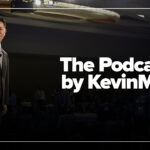I remember the first time I was shamed for asking a question. It was during my OB/GYN clinical rotation in PA school. I asked my attending physician something about a patient, not out of laziness, but because I genuinely needed clarity. But instead of guiding me, he shut me down. “You should be doing your research. You should be telling me about the patient, not the other way around.” I understand where he was coming from, but at that moment, I learned that if I had a problem, I had to figure it out for myself. Support wasn’t available. And asking for help? That wasn’t a strength; it was a weakness.
That wasn’t an isolated event. It was my introduction to a professional culture where silence is rewarded, composure is expected, and needing help becomes something you learn to hide.
Think about it. From the first day of clinical rotations, we’re conditioned to suppress the very instincts that keep us human. Fear, uncertainty, and emotional response get tucked away and replaced with protocol, efficiency, and calm execution. Don’t get me wrong—I get it. In many ways, it’s a necessary adjustment. You can’t fall apart in an emergency. You can’t freeze in front of a crashing patient. Health care demands a unique blend of precision and presence in the face of chaos, and that requires override. But that override becomes a habit.
We learn to suppress our F3 (fight-flight-freeze) response, not just in emergency situations, but in ourselves. We learn to keep going no matter what. We don’t question whether something is sustainable. We just push through it, because that’s what we’re trained to do. Because that is what is best… right?
The danger is that these same traits that make us effective, respected, and often admired can also make burnout invisible. If we’re too competent to be seen as struggling, too composed to be checked on, too independent to ask for help, that can be fertile ground for burnout to take root.
Before I was a PA, I was an EMT in New York City’s 911 system. I remember when I attended the FDNY academy being taught that kids are excellent compensators. My instructor said, “Don’t be fooled by your pediatric patient who seems fine despite the chaotic situation you found them in. Children can compensate extremely well… until they can’t. When they crash, they crash hard and fast.” Similarly, burnout doesn’t always look like collapse. More often, it looks like quiet survival. And by the time the warning signs show up? We’ve internalized the belief that we should already know what to do, that we should be able to fix it on our own.
This creates, however, a complex culture in health care. The people who were trained under this culture of stoicism years ago are now the attendings, supervisors, and administrators of today.
The message they received—”figure it out on your own,” “don’t complain,” and “don’t show weakness”—was never reassessed. So now, intentionally or not, that same mentality is passed down. New clinicians walk into old paradigms. And so the cycle continues. I’ve seen this first-hand. I’ve lived it. And I’ve worked with enough health care professionals to know that I’m not alone.
One recent burnout survey of 2,000 U.S. adults found that younger generations, particularly millennials and Gen Z, reported reaching their peak stress levels around age 25. While the study wasn’t health care-specific, the trend highlights a broader cultural shift that people are burning out younger and faster.
And if a 25-year-old outside of medicine is experiencing that kind of pressure, we’d be naive to think someone in health care at the same age is facing less. On the contrary, the demands of clinical training, emotional suppression, and the constant pressure to perform exponentially increase the risk of burnout compared to their peers in non-medical roles. The problem is that burnout rarely announces itself with flashing lights. It usually shows up quietly, with subtle changes. A shift in tone. Difficulty concentrating. A sense of detachment. What we clinicians would refer to as “non-specific symptoms.” When that happens, burnout is not only hard to detect—it’s hard to accept.
When we give patients a diagnosis that surprises them, especially one they don’t want to hear, they often respond with rationalization. “But I eat healthy.” “But this doesn’t run in my family.” “But I’ve done this before and nothing happened.” That may all be true, but it doesn’t change what we’re seeing.
And I’ve noticed something over the years, both in practice and in working with health care professionals navigating burnout. The same thing often happens to us with burnout. We tell ourselves we’re just tired, that it’s just a busy season, that we can handle it. We know the signs, we know the language, and yet we still argue our way out of facing what’s happening. We’re burning out—or perhaps are already there. We convince ourselves it’s not that bad. That we’ll bounce back. That we can push through, because of course… we always have.
The hardest part isn’t recognizing burnout in others. It’s recognizing it in ourselves. And even when we do, the next challenge is allowing that recognition to mean something. Because acknowledgment brings the question: What are we going to do with that awareness? Are we willing to respond differently than those who came before us? Clinicians differ in how they respond to the stress of the job, and so the path forward beyond burnout isn’t one-size-fits-all. For some, it means a shift in mindset. For others, a change in workload, boundaries, or even career. What doesn’t work is acknowledgment without action.
To be fair, there are moments when the weight becomes so heavy that taking action feels impossible. But movement doesn’t always have to be massive. It might start as a conversation with a supervisor, a quiet boundary, or a small but meaningful recalibration. Cultural change begins with personal recognition, but it gains power when that recognition is shared. And sometimes, change starts outside the workplace entirely. It begins with remembering who you are beyond your credentials. Returning to something that energizes you, grounds you, reminds you of your value, and reconnects you to the version of yourself that existed before survival mode took over.
Burnout isn’t the end of the road. It’s the fork in the road that invites you to decide what direction to take next.
Marco Benítez is a physician assistant.



















![Cancer care's financial toxicity [PODCAST]](https://kevinmd.com/wp-content/uploads/Design-1-190x100.jpg)
![Understanding the deadly gaps in pediatric dental safety [PODCAST]](https://kevinmd.com/wp-content/uploads/Design-3-190x100.jpg)


